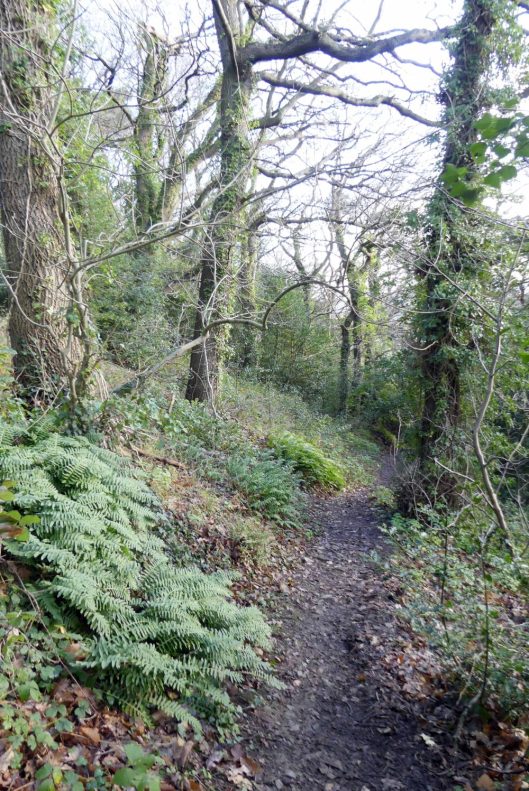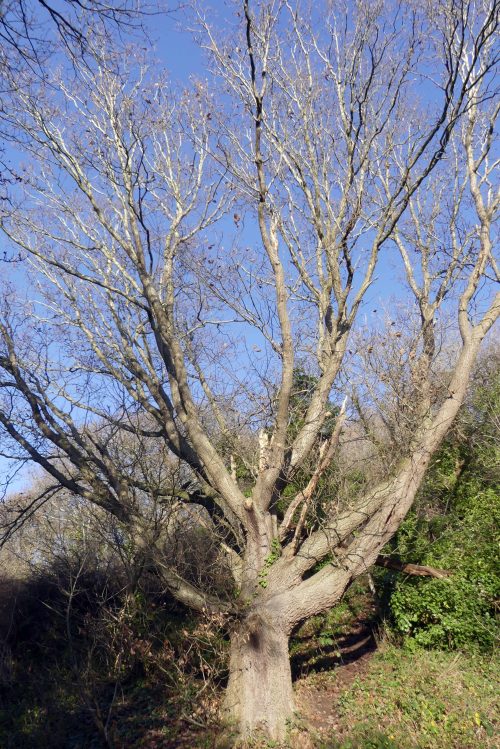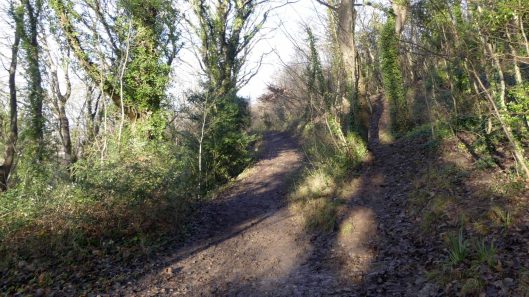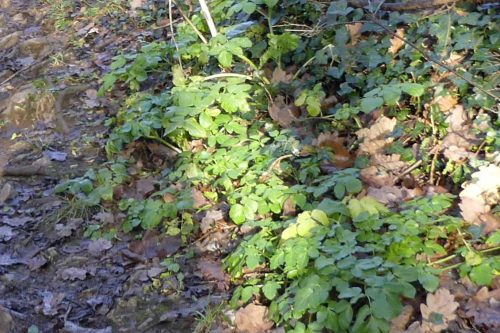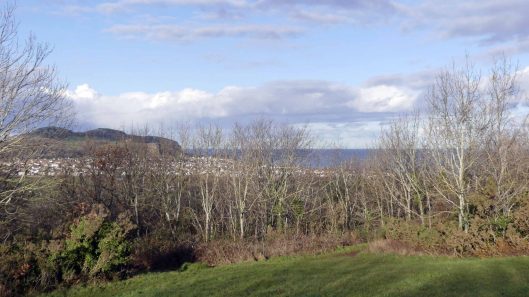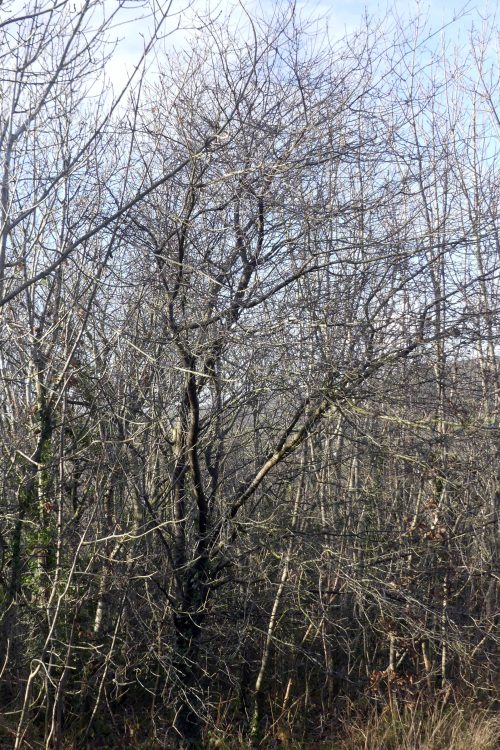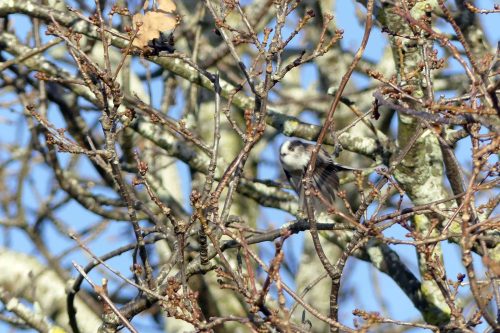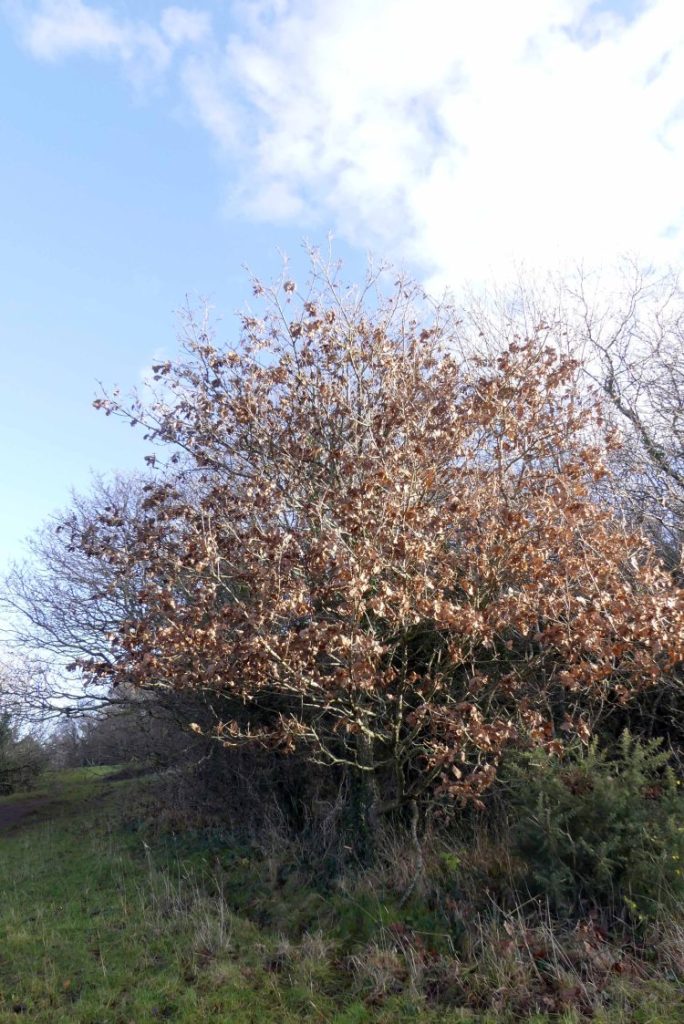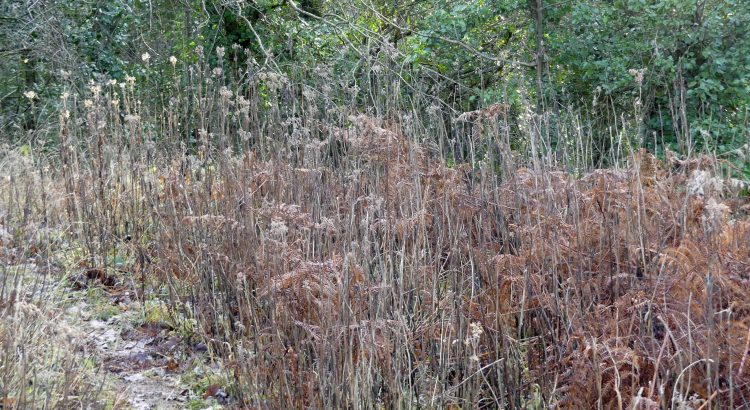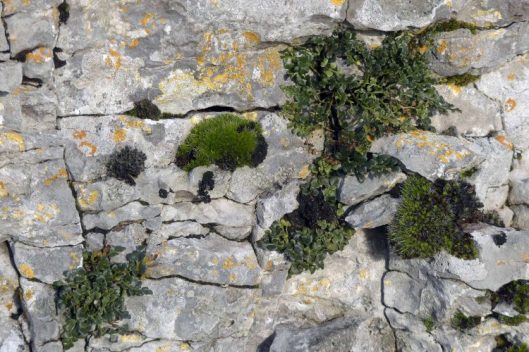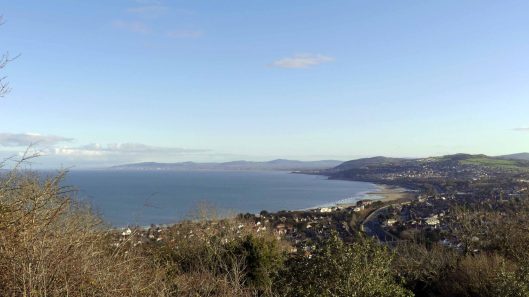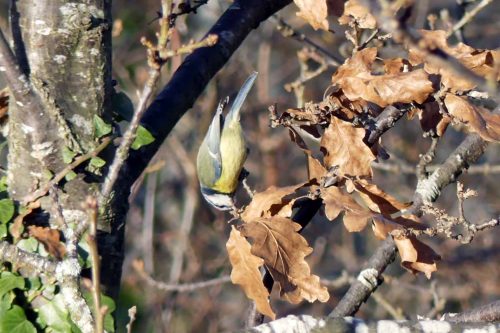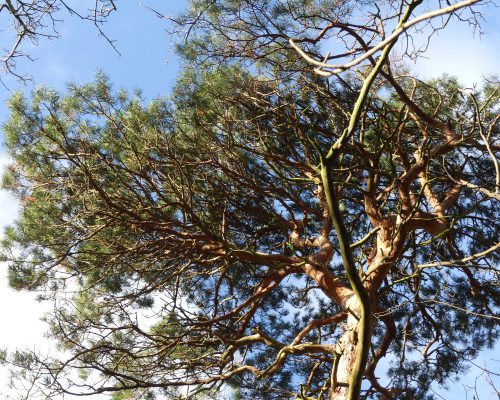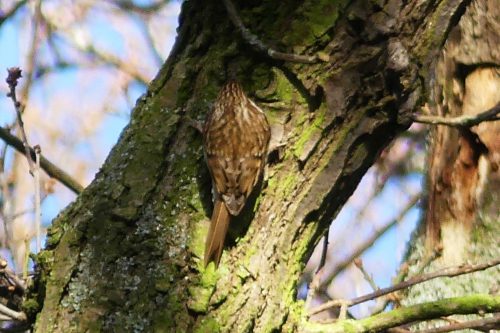Tags
Bryn Euryn Nature Reserve, ferns that stay green in winter, flowering, gorse, hazel catkins, hill walks, January, rhos on sea, walks with views, winter, woodland
As last year was drawing to a close I began thinking about how to go forward with this blog and how I might keep it fresh, interesting and not too repetitive. But the more I thought about it, the more I realised that visiting and reporting on what’s happening in the same places year on year still interests me as much as it ever did. Finding things have stayed pretty much the same over a period of time is reassuring, and no matter how often you visit a particular place, there is almost always something new to discover and learn about. Also, in the rapidly-changing times we are experiencing, it’s increasingly important that we notice the ifs, the wheres and the whens of our local everyday wildlife, how it is faring and to note any changes. With that in mind, I set off for my first walk of the year to see what I could find around my local patch on Bryn Euryn.
WOODLAND PATHS
The walk began with a bit of a shock – a sign declaring that the woodland I’ve come to know and enjoy over the past eight years and was about to walk through, is for sale!
It’s not the whole of Bryn Euryn’s woodland that is on offer, but this privately-owned area, which covers a sizeable 10 acres or so, and fronts the Local Nature Reserve, is some of the oldest. There are some lovely big old trees here and it provides nesting and foraging habitat for a good number of species of birds. It’s also the only part of the woodland that has bluebells and wood anemones, both indicators of an old, maybe even ancient wood. In an ideal world, our local council, who own and manage the adjacent nature reserve would take it over, but I suspect the asking price might be too high for them. In this particular area, where there is great demand for property, my fear is that it could potentially be built on.
WOODLAND PATHS
Despite the lack of its green canopy, the woodland is always green to some extent, in every season. There are serious dark evergreen yews and plenty of holly that catches and reflects back beautifully any available light. Tree trunks are clad with the borrowed greenery of ivy, which rapidly races high up almost every available vertical surface, and more that scrambles to cover the ground beneath them.
Several fern species stay green throughout the winter too. Male ferns are fairly frequent, and there’s one spot alongside the path I took today, which has a lovely fresh spread of polypody fern. It suffered badly in last year’s summer heat and drought, but has recovered fully and come back better than I’ve ever seen it. The backs of the fronds are covered with neat clumps of spores, or sori as they are properly known.
There are several species of polypody fern which superficially all look similar, so it’s difficult to be sure which one you’re looking at, unless you’re an expert, which I’m not. Based on a few key points I think this one could be western polypody, Polypody gallii, but I can’t say for sure.
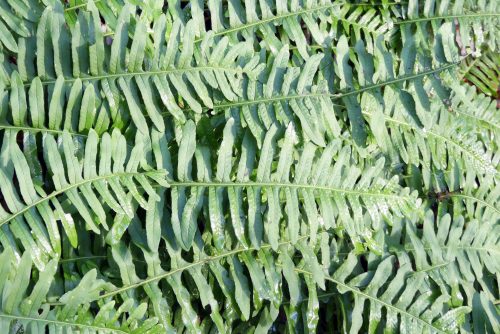

Some ivy berries are ripe, others are not.

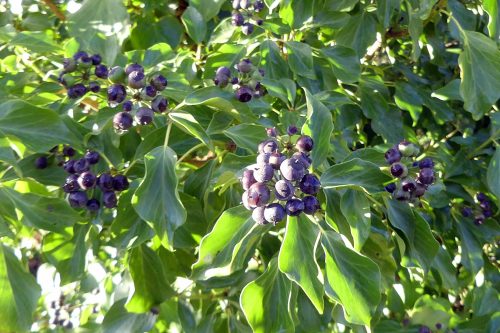
At the top of this first rise of the path it meets with two others. At this junction there is a big spreading holly bush and next to it, another less usual evergreen, spurge laurel. This particular plant is getting to a good size now and is just beginning to open its pale lime-green flowers, which are pretty and smell lovely too, should you feel able to get down to their level!

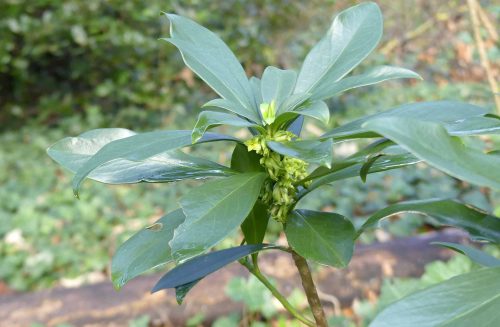
Through the bare branches of the trees, although still sunny here on our side of the valley, low cloud sat over the distant hills and a misty haze hung over the land below.
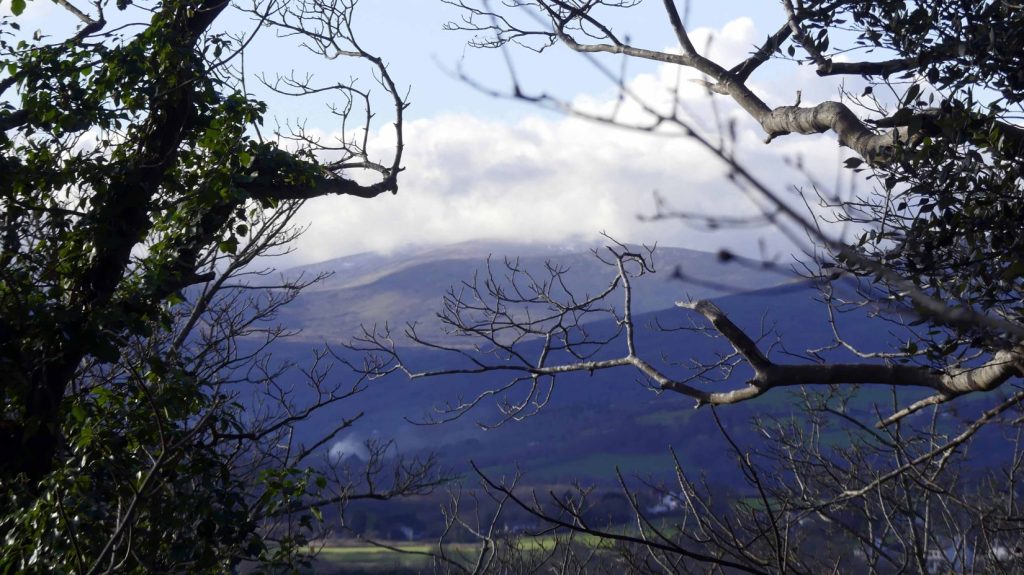
One of my favourite parts of this path passes between a stand of Scots pines, (known to me on my own mental map as the Pine Grove). Most of the tall, straight trunks of these characterful trees lean to some degree, at a variety of angles, while way overhead, their long limbs bend and twist in the strangest of ways, as though they’ve been frozen mid some strange, swaying waving wind-dance. Sadly, in recent years, several of their fellows have been lost, some brought down in storms and one or two felled as they were in danger of falling.
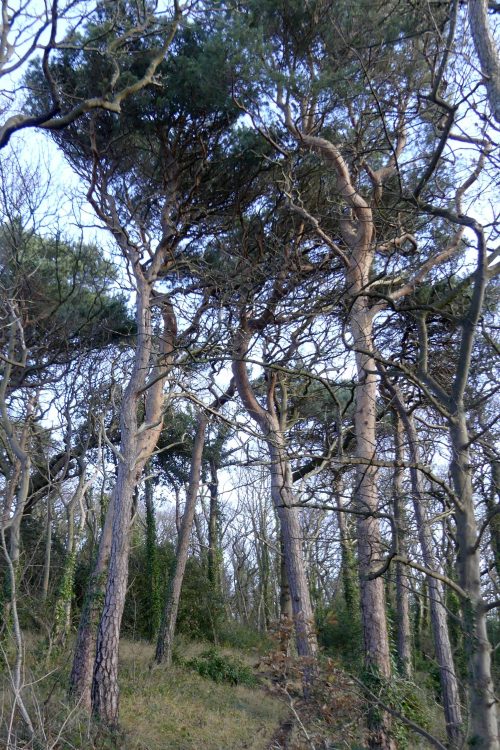

WOODLAND TRAIL
The path carries on upwards, soon joining up with the Woodland Trail that circuits, and in parts, forms the boundary of the Nature Reserve. About to step onto the trail I stopped as first I heard, then spotted, a small party of blue and long-tailed tits that were foraging in the scrubby vegetation behind the wooden bench. This part of the Trail is one of the best places to see and hear a good variety of the bird species that are resident or migrate here, and several reliably stake territories and nest close by. One of my favourite trees grows here too – a big, rather battered old sessile oak that has lost a few branches, but battles on. Silvery grey in the bright sunlight against a dark blue sky, its limbs lifted skywards, it must surely be enjoying soaking up the warmth? I wonder if the great tits will nest in the cavity of its thick bottom branch again this year?
At this point I almost always hesitate and debate with myself which way to go. Reminding myself that part of my original plan for this walk was to see what, if anything, there was in flower, my best chance of that was to go the most-trodden route and turn left. There’s a small amount of gorse along here that was just beginning to open up a few golden petals, which I’m always happy to see (and smell!), but thus far not a single other stray wildflower, nor even a catkin.
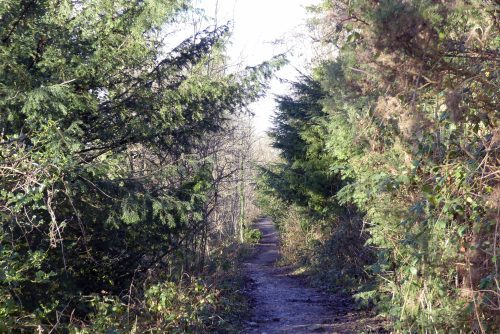
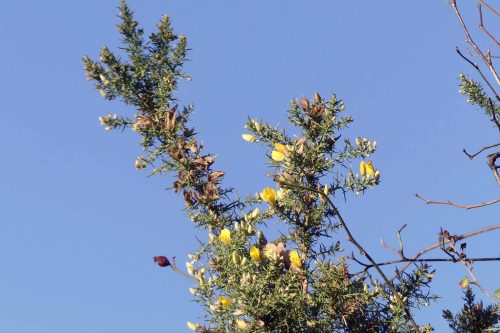
The lack of leaves, flowers, insects and other such distractions leaves space for noticing other things. The sculptural shapes of the trees, the textures of bark and lichen on twigs and branches. The sounds and glimpses of birds; a robin singing or perching, head cocked watching for movement in the leaf-litter below then pouncing down on it. A brief sight of a tree-creeper spiralling up a tree trunk. Tits calling to one another as they scrutinise trees for hidden prey, the gronk of a raven passing overhead. Woodpigeons flying on creaking wings then crashing in to land on the lookout for ripe ivy berries. Then, nearer to where there are houses below, argumentative magpies screeching and crows cawing harshly.
On bright sunny days the leafless trees let through the light and show slices of the views beyond them. The shadows of their trunks and branches create intricate criss-crossed patterns on the ground. The track surface, eroded by the elements and by the traffic of walkers is bumpy, and in places you have to keep your eyes down to avoid tripping up, so although I meant to, I didn’t notice if the line of hazels had catkins; although, to be fair, they would have been above my head height anyway.
The bank between the main trail and the ‘shortcut’ to the field is damp, sometimes even wet, and muddy in all but the driest of weather. Perhaps because of its dampness, it’s a good spot for wildflowers; it’s the only spot I know of in the woods where sweet violets grow. The flowers are white and very often get spattered with mud, but the patch is spreading year on year and odd plants are cropping up nearby too. In a good spring there can be a nice lot of lesser celandines, and later in the year a couple of plants of hedge woundwort. There were new violet leaves amongst the leaf-litter today and on the very wettest part a patch of bright green liverwort.
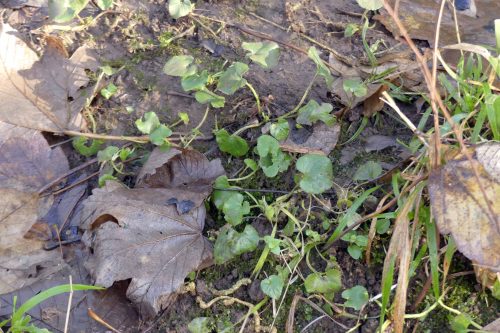

Taking the shortcut up to the field, I hoped to see or hear a mistle thrush, but no such luck. Near the top of the track I noticed a patch of leaves of Alexanders – it’s range within the site is spreading year on year, perhaps because of seeds being eaten and spread by birds, or perhaps more likely by seeds picked up by, then falling from the soles of walkers’ shoes.
ADDER’S FIELD
The views from this side of the field are always good, but perhaps better now while the trees are bare of leaves. Even after years of living close to coasts, I am always amazed by the depth and intensity of the blues of winter skies and the sea on sunny days.
A short way from the bottom end of the field grows a cherry plum tree. Once again, as far as I know, this is the only one on the site of the reserve, and I would love to know how it came to be here. Cherry plums are the first of the trees to produce blossom, which comes out during February or early March before the leaves appear. I like to start checking this one early, so I don’t miss it in its glory. It’s a bit early yet, but the flower buds are already beginning to swell, so it won’t be too long.
The field edges are bordered with an interesting mix of plants – mostly prickly ones, including gorse, brambles and a lovely stretch of burnet rose. Later in the year this will be one of the best spots in which to see butterflies and a range of other insects.
I thought I might find one or two unseasonally early- blooming wildflowers here, but I think it’s been too cold lately for even the hardiest of them.
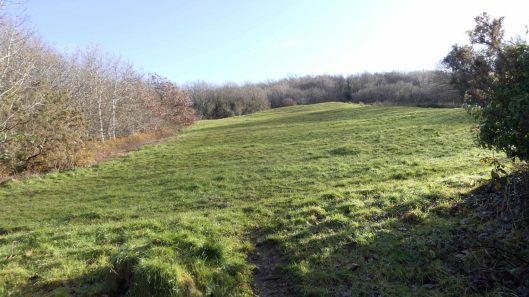
There are fresh leaves though; salad burnet pushing through a layer of leaves and rockrose cushioned against bright green moss.
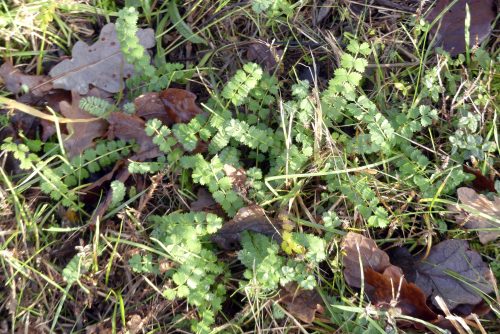
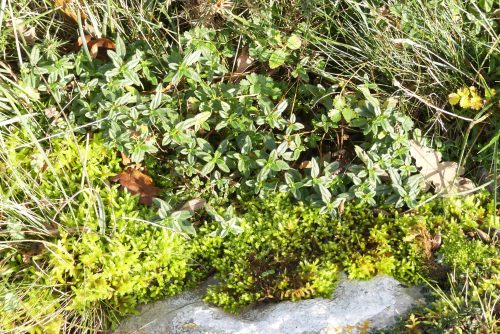
I loved the contrast of the fluffy seed heads of a sunlit wild clematis – aka the aptly-named old man’s beard or traveller’s joy, with the thorny dog-rose, which still has a few over-ripe hips clinging to it.
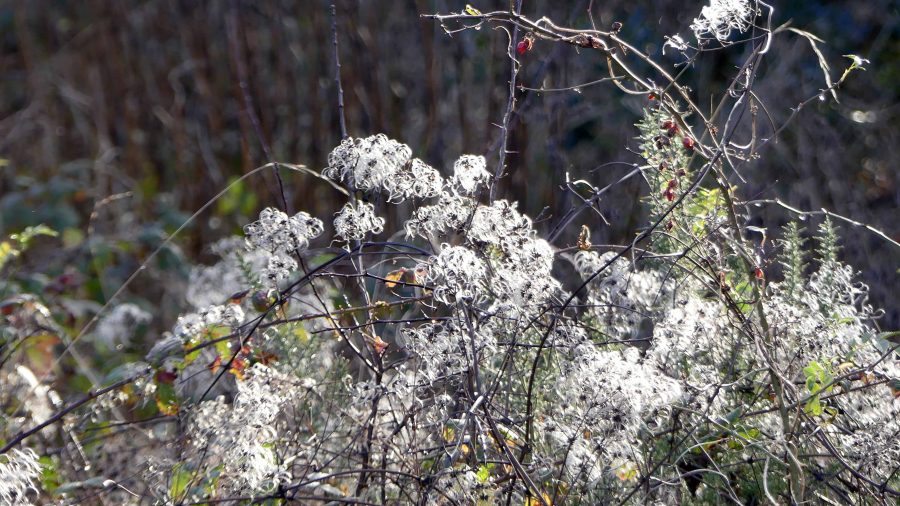
Flitting around the oaks at the top of the field, a small party of blue and long-tailed tits, maybe the same ones I saw earlier, maybe not.
As I said earlier, the majority of the deciduous trees have lost all of their leaves, but every year there are one or two small oaks that hang on to theirs throughout the winter.
Trails meet at the top end of the field and as I wanted to continue to go up, I turned right to join the Summit Trail. Here too gorse is beginning to flower and the spiky bushes are studded with golden buds.
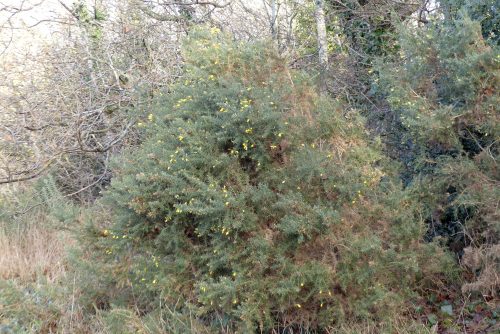
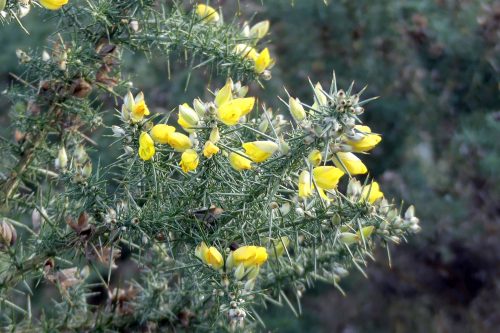
On the opposite side of the track bronzed bracken and the dried stems and seedheads of hemp agrimony still stand.
SUMMIT TRAIL
The track rises quite steeply through shady woodland for some way, then leads out into the light and open space at the top of a limestone cliff revealing this amazing view, which surely no-one could ever tire of. Here you can see the A55 Expressway snaking along the valley towards the mountains, with a glimpse of the river Conwy in front of them. The village of Mochdre is to the left, and the the not-so-lovely, but necessary recycling centre, which with some irony is located adjacent to the crematorium.
The grass and scrubby vegetation that provided great habitat for butterflies, bees and other insects back in the summer has been cut down, but should soon begin to grow up again.
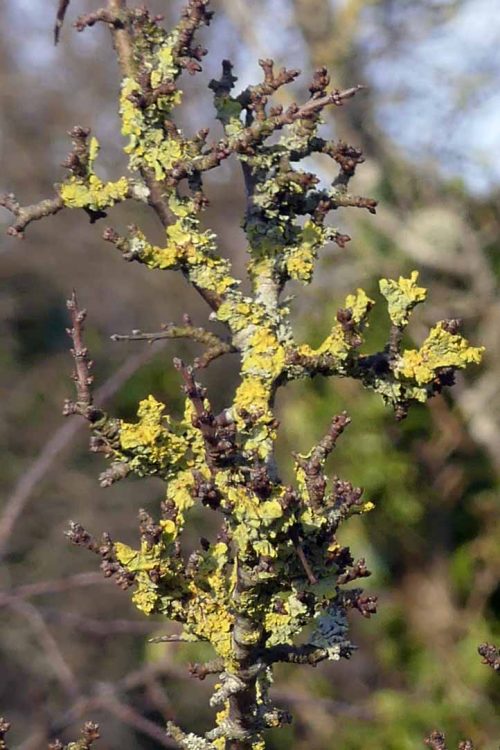

On an exposed limestone rockface I found lichens and cushiony moss and growing from cracks, the pretty fern called wall rue Asplenium ruta muraria.
At the summit there were people practising flying a drone accompanied by their big dog, which bounded over and stood barking at me. People that know me well will know my thoughts on this (!) I’m not afraid of dogs, but it did make me nervous- you never can tell why they’re actually barking at you – and it took a few minutes before they called it back and put it on a lead. I had wanted to get some photographs from here, but took this one of a very blue Colwyn Bay and quickly moved on.
The long grass and scrubby shrubs at the edge of the hillside going down from the summit has also been cut down. In the summer this is where, hopefully, pretty common spotted orchids will grow and it will become once again the domain of the glorious dark green fritillaries. New trees are growing here, oaks and silver birches, which will eventually extend the woodland, but for now a single Scots pine has the hillside and the views over Rhos on Sea all to itself.
At the bottom of the hill, finally, hazel catkins! This particular tree is usually one of the most reliable I know for producing a consistently good amount of catkins, but as with other hazels on the site it seems to struggle to produce many nuts.
An acrobatic blue tit foraging in a nearby oak tree finished off my walk nicely.


